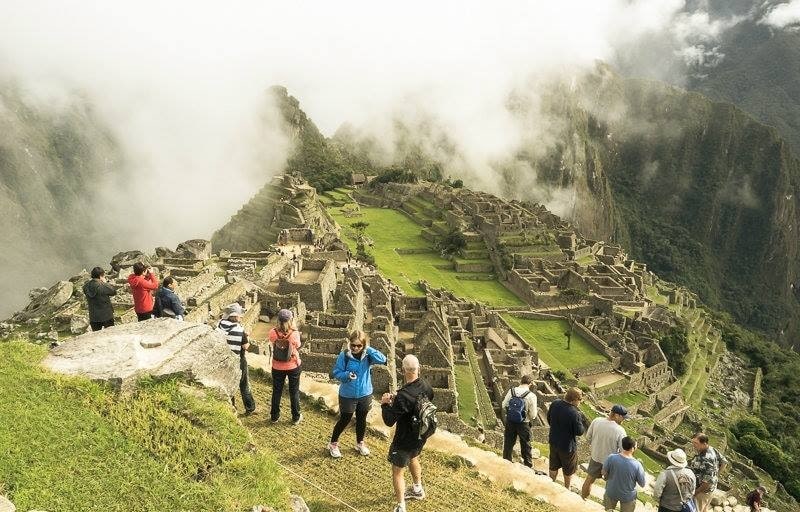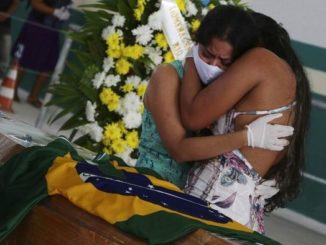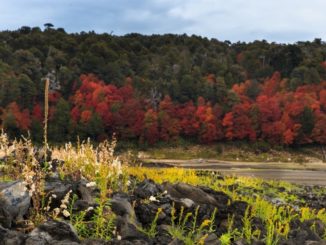
FERNANDO CALLE
LIMA – One of the true pleasures in my life is to travel. It is such an exciting feeling to discover the unknown, to explore new destinations, and to experience the diversity of cultures.
I have always thought that the best way to spend your money wisely is to take a trip somewhere. I have been blessed with the opportunity to have travelled to many places, not only in the States but all over Latin America. Though I have not crossed the Atlantic just yet, it is something I’m really looking forward to do in the near future. But what I can honestly say about my trips is that they are for sure, unforgettable memories that I will treasure in my heart forever.
Last year, one of the very first moves of our newly elected President Mr. Kuczynski, was to travel to China. He went not only to strengthen the already existing commercial and cultural relationship we have with this enormous country, but also to interest the Chinese people in coming to visit our country and encourage it as an exciting tourist destination.
I thought that was an excellent idea because of the massive population and the powerful economy that China has, which could generate great revenue for us. I wonder now, however, if Peru is really able or really ready to welcome these incredible amounts of people. For many years, our country has become more and more one of those countries people around the world just have to visit. This year we have been voted as one of the top 52 places to go in 2017 by the New York Times.
It is very true that from the touristic point of view, we manage to stand above the crowd in many aspects. Our natural and cultural treasures have fascinated people that visit us for many years and lately we have been put on the map by Gaston Acurio for our delicious gastronomy. Celebrating food culture in Inca country is very attractive for many tourists around the globe. The tourism industry is a multimillion dollar business and there are many countries that rely on this economically to manage their country’s budget.
I am no expert in the tourism industry but from a traveller’s point of view I can deduce that without some serious infrastructure all of these hopes of having our economy grow from the tourism industry will not become a reality. A lot of countries who have seen the potential of the tourism industry have invested heavily in their infrastructure. Countries like Chile for example, that has 14 international airports or Mexico who has around 1,834 airports, ranking 2nd in number of airports in North America and 3rd in the world.

Now let’s analyze our infrastructure. The only major international airport our country has is (LIM) which is the international airport code for the Jorge Chavez International Airport, that by the way has been remodeled and has become one of the most important in South America.
Then we have (PIO) which is the newly inaugurated Pisco International Airport that really can’t, as far as I know, welcome massive amounts of people and really big aircrafts. And now we have the Cuzco Chincheros International Airport project and unfortunately it is a disaster in every aspect.
I’m really not familiar with all of the mishandlings being mentioned by the media and all of the corruption scandals going on with the government and the Minister of Transportation, but what I do know is that instead of moving forward this type of “red tape” slows us down, economically speaking.
Unfortunately, because of all of these corruption scandals, every project has to be questioned, investigated and evaluated. I feel really frustrated with the way things are being handled; politicians always wasting precious time, debating and arguing and not working towards a common goal. The Peruvian way once again. Now after all of these debates who knows when this project will get started and better yet, get completed.
On another note, the Ministry of Foreign Trade and Tourism of Peru (MINCETUR) hopes to receive 5.1 million foreign tourists in 2021. The long-term plan aims to make tourism the second largest source of foreign currency in Peru (it is currently the third), generating a projected US$6,852 million in expenditures by international inbound visitors and approximately 1.3 million jobs in Peru. In 2011, Peru’s international tourism receipts totaled US$2,912 million. So this all looks good to present on paper but the reality is that with only two international airports our chances to compete with other nations is really not very realistic.
One positive event that took place not too long ago was the inauguration of the first cable system in Kuelap. I applaud this project very much and at this point it doesn’t matter which government in turn gets the credit for this achievement. I foresee this being a great attraction for the tourism industry and I hope more of these projects become a reality so our visitors are able to witness the wonderful natural views and sceneries we have to offer. I just wish the decision makers of this country would work towards having some common sense and realize that without some serious infrastructure we will always be just another third world country based on informality.
Fernando Calle is a Peruvian born, American citizen who has lived in the U.S. for over 25 years. He is a Cardiovascular Technologist and Sleep Disorder Specialist, having worked for Baptist Health Systems (Florida, USA) where he held the position as Chief Technologist of the Respiratory Disorders Department. After having worked for his own companies (Sleep Services of South Florida and Total Health Diagnostics, also in South Florida), he currently resides in Lima, Peru on a new quest as an English Teacher. He can be contacted at speakenglish16@gmail.com.



